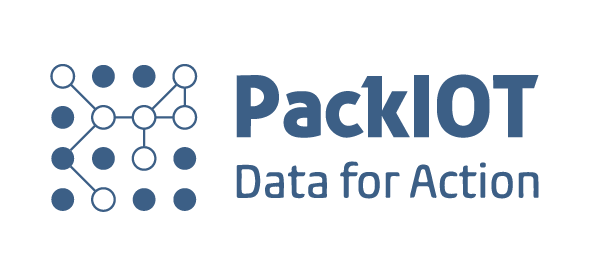By Mariana Costa, Marketing Specialist at PackIOT
How does digital transformation really happen? “Digital Transformation” became a very big expression used across several industries and contexts to name the process through which the company adopts and implements digital solutions which offer benefits to its activity. In this blog post we want to dig deeper and explore the necessary steps to bring digital transformation forward in the manufacturing world.
When researching to bring this blog post to life, it was very easy to notice the prevailing narrative around digital transformation as how digital transformation enables a cultural shift in the company. Interesting how often we talk about culture as consequence of a certain event but not as the force behind it. This approach might be missing some important aspects… Before we move further into the subject, we want to bring to light why we decided to talk about this.
Some weeks ago, in a very normal day at PackIOT, during a meeting with a client something very important was said: “Culture first. Tool second.”. So important that we had to write about it. Guess what, no matter how amazing a digital tool is and the benefits that come with it, if the company is not ready to receive the innovative tool, value will be lost. The full potential is hidden, resources are wasted and the project is close to failure. So, let’s talk about culture and put it where it deserves to be put: at the forefront of the digital transformation journey. How should companies look at culture and re-create it at the different levels of an organization?
In order to find clearer answers to these questions, we decided to explore what the study “Culture as Key Success Factor in Industrial Digital Transformation” by Russel Reynolds Associates had to say. The study is divided in five main chapters:
1 Aligning company culture
2 Culture key factors that facilitate digital transformation
3 Methods to drive cultural change
4 Advices to CDOs and digital leaders
5 Some words to industrial executives and HR leaders
#1 Aligning Company Culture
Culture is introduced as a social force that shapes and promotes ideas, customs, social behaviours inside an organization. While it can promote some, it can also discourage others. For instance, the key importance of culture is how critical it is to build a shared sense of purpose that mobilizes employees to work towards a common goal.
Even though culture seems to be such an important and integral part of an organization, more often times than not it is not taken as a priority. It comes as a second thought when sometimes all it needed was to be the first. Possibly, this can be explained by the intangible nature around the concept of culture, aligned with the challenges that come with the possibility of changing the norms and values that have been institutionalized for years in an organization.
To understand how companies are adapting to the digital transformation, this study interviewed more than twenty senior digital leaders at industrial companies and several individuals from other industries who were facing similar organizational and cultural challenges related to digital transformation.

The findings with the interviews aligned with the experience of dealing with customers directly allowed them to come to the conclusion that an evolving culture in a company is key to successful transformations.
Most industrial companies have an established culture that rewards a singular, focused expertise, most likely developed over decades of working in the same environment. This model is expected to be found in companies with fairly rigid hierarchies , with a need for high levels of consciousness, as known as the fear of risk. Even though this culture can offer precision and high quality, it is also the cause for long development cycles. Thus, this is not compatible with the faster pace of software based services.
Digital success needs a culture that is aligned with business, talent and technology strategies which, in a global perspective, represents an approach to an holistic strategy mindset.
#2 Culture Factors That Facilitate Digital Transformation
Innovation: The culture must be characterized by curiosity, a willingness to engage in productive and challenging conversations, diversity of thought, and independent perspectives. When diversity of thought is explicitly valued, new ideas emerge more easily.
Agility: Processes and systems can be either rigid or flexible. The perceptions around these affect individuals’ ability to flex their own approach within a system that supports their initiatives and doesn’t simply prioritize the status quo. Furthermore, this flexibility needs to pivot quickly, fueling a common perception of urgency to reach intended goals. This is best addressed by structures that allow for collaboration and partnerships.
Digital Orientation: Digital cultures emphasize the expertise of their people and highlight their contributions to the digital realm. This is linked to how comfortable employees are embracing new technologies and exploring the new tools that could help them achieve higher goals. It is also imperative that there is clarity around the digital agenda and that the mission is communicated often and consistently.
Future Orientation: Productive change means focusing on the future state. This is a culture that commits to a few process oriented principles: a comprehensive approach to planning, aligning incentives to the behaviors that drive action toward digital goals, and approaching and evaluating risk as opposed to avoiding it.
Insight: A solid customer orientation will help companies develop insight into industry trends and competitor activities in the local, regional and global contexts. Understanding the needs of the workforce and committing resources where appropriate will support employees’ efforts in facing industry trends head-on.
#3 Methods to drive cultural change
To drive the needed cultural change, companies need the commitment and ongoing efforts from most of the senior leaders. Besides that, it also needs to be driven at multiple levels of the organization: Executive Team, Human Resources and Digital Leaders. Everyone needs to be aligned in the transformation journey – what should each of these actors be able to provide to the organization in order to enable the digital transformation? Let’s find out!
Executive Team:
1 Create a mission-driven transformation (the senior individuals must embody the associated values and behaviours)
2 Break down hierarchies to avoid decisions being stalled by multiple boards/councils.
3 Enable idea generation and a fail-fast mindset
4 Encourage a mix of generations
5 Partner with other players in the ecosystem to acquire readily available solutions and expertise
6 Recognize and reward open mindedness and willingness to change
Human Resources
1 Encourage hiring people with diversity of thought and background (mindset of inclusion, acceptance)
2 Enable rotation of talent both into and out of the digital team to empower a broader group of employees
3 Allow digital leaders to take action when they diagnose a need (e.g. training or development to get talent to the next level)
4 Create different physical spaces (shared coworking spaces and “digital centers”)
5 Engage factory and service employees by creating a “hero” culture, encouraging them to be pioneers who take pride in being at the forefront of the transformation
Digital Leaders
1 Define clearly what digital means to the company to ensure everyone works towards a common goal
2 Work closely with customers on “co-creation” to ensure digital functionalities and products are not created in a vacuum
3 Visit plants and offices to understand which internal processes can be optimized using technology/analytics
4 Leverage new products and functionalities, KPIs and revenues to tell a positive story to prove the point, and reiterate that digital is a means to an end
5 Be pioneers for open and transparent communication across the organization to help drive employee engagement
#4 Advices to CDOs and Digital Leaders
In order to bring the best advices, it is key to bring understanding to the main motivations and challenges the actors in the digital transformation journey feel. This study came up with important advices taking into consideration the main pain points felt by CDOs and Digital Leaders. brought to the surface.
Motivations: Create (significant) impact in an industry. The commitment demonstrated by the senior leadership team, in particular the CEO, throughout the recruitment process.
Challenges: Digital transformation happens overnight. It is a multi-year journey. Unrealistic revenue targets A perception that leaders from the technology industry are technical leaders. reluctance to break the silos.
Advices: Be an an influencer and a culture-carrier. Prioritize showing results of new products, services. Learn the language of the industrial organization. Work with HR and leaders to create a desirable place to work for top software and technology talent.
#5 Advices to Industrial Executives and HR Leaders
Industrial Executives – Lead the transformation
1 Recognize that culture change is a strategic imperative.
2 Establish which (customer) issues digital transformation is going to solve
3 Actively and visibly communicate the culture change (and live it)
4 Implement reverse mentoring to constantly educate senior management
5 Be open to external advice and feedback on what in the culture needs to change
6 Be realistic about digital business revenue expectations and investment plans (time and money)
Human Resources – Enable the transformation
1 Help identify talent by developing a digital assessment framework.
2 Digital breaks down silos and traditional organizational structures. Educate business leaders and accompany them on this journey
3 HR also needs to treat employees as customers and focus on the employee experience at work,
4 Embrace the differences in culture between tech and industrial businesses.
#6 Why is this important
In the manufacturing world, most companies aren’t even beginning this digital transformation journey. Nevertheless, some are and, from those who have started it, another fraction might not be ready to receive new digital tools yet because no internal and cultural work has been developed between departments. For instance, all this means is that the majority of the things we mentioned before aren’t a reality still, making this subject one of the biggest barriers we face in the manufacturing world when talking about digital transformation.
The first very important step is to completely understand what really means to go under that digital transformation journey: actors involved, initiatives, mindset, investments, among other factors. Educating ourselves is the starting point towards more productive conversations with different stakeholders in order to push the industry forward:
1 Dismistify challenging thoughts that surround the digital transformation process.
2 Show figures to prove it.
3 Talk about how culture is the driven force and make it less intangible.




